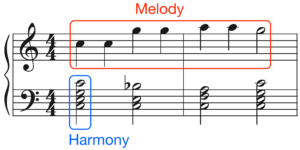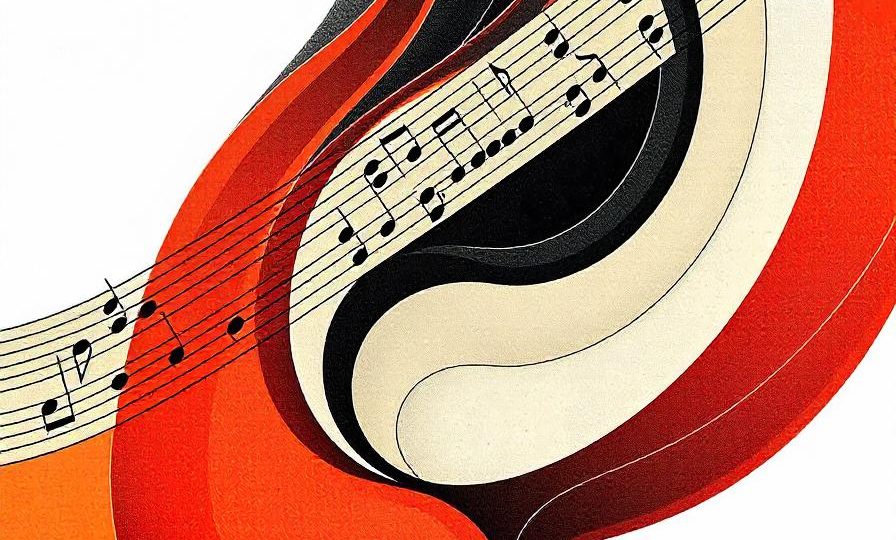Melody vs. Chord Progression: Understanding the Building Blocks of Music
In music, melody and chord progression are the two fundamental melodic building blocks. They shape the emotion and mood of a composition. While these elements often work together, they each have a distinct role. The melody generally represents the “tune” or main musical line that sticks in our memory. A chord progression on the other hand provides the harmonic backdrop to a song. Understanding the differences between these two distinct elements is essential when composing music.
In this blog, we’ll dig into the basics of melody and chord progressions, explore their roles, and look at how they work together to create a full musical experience.
What is Melody?
A Definition
A melody is a sequence of individual notes arranged in a way that sounds musically satisfying and recognizable. It’s often what people often think of as the main tune of a song. If you find yourself humming to yourself, chances are it’s the melody of a song that you’re humming. Melodies can be incredibly simple or in the case of genres such as Math Rock and Jazz extremely complex and sophisticated.
Structurally melodies have shape and rhythm, moving up and down in pitch to create a distinctive pattern. They can be played using an instrument or sung forming single lines rather than chords that tend to repeat. The monophonic nature of melodies makes them easy to memorise and instantly identifiable.
Role of Melody in Music
Since melodies usually represent the main tune of a song, a well-crafted melody can connect and resonate with listeners like nothing else. Whether it’s a pop chorus that you can’t get out of your head or an emotive instrumental line, the melody is usually the feature people most strongly associate with a song.
Melody can be effective in driving a song forward, giving it direction and character. For producers and songwriters, crafting a catchy or evocative melody is often the number one priority when composing.
Melody in Different Music Genres
Melodies are present in most genres, but their interpretation and style can vary widely. In pop and rock, you might hear simple melodies that are designed to be catchy. On the other hand, melodies in classical music can be elaborate and intricate. They can develop throughout a classical piece, taking the listener on an emotional journey. Hip-hop and trap beats often use repetitive melodies. These melodies can be used to create a particular atmosphere or vibe, often leaning towards a darker more moody feel using minor scales.
These examples offer just a glimpse of the many ways melody can be used, showcasing how versatile and powerful melodies are in shaping a piece’s overall mood and appeal.
What is Chord Progression?
A Definition
Before defining a chord progression, let’s first clarify what a chord is. It’s a combination of three or more notes played together to create harmony. A chord progression, therefore, is a sequence of these chords played in a specific order. This sequence is fundamental in defining a harmonic foundation for a song.
Chord progressions often repeat in cycles, creating a sense of stability within a track. They have an important role in supporting the melody which should seamlessly complement and integrate with the chord progression. Each chord in a progression should have a distinct feel and purpose. It’s the movement from one chord to another that has the power to inspire an emotional response in the listener, shaping the song’s mood and feel.
Role of Chord Progression in Music
Chord progressions serve as the backdrop for the melody. They not only provide structure to the melodic content but also add to a track’s emotional depth. While not as prominent or attention-grabbing as a melody line, the chord progression is equally as important as it creates the harmonic framework that allows melodies to shine.
Chord Progressions help set a song’s tone and influence how melody is perceived. For instance, a melody played over a major chord progression may have an uplifting or happy feel, while the same melody over minor chords might feel sombre. Chord progressions are therefore fundamental in how listeners interpret and experience the music.
Chord Progressions in Different Music Genres
Different genres use chord progressions in distinct ways. In jazz, chord progressions can be complex and sophisticated. Jazz chords reinforce a tracks swing and rhythm as well as allowing for improvisation and variation. Pop music often relies on simple, predictable progressions that allow an ideal foundation for catchy melodies. In EDM where basslines tend to be paramount chord progressions tend to be even simpler, the chord progression might be minimal or even implied through basslines, focusing more on rhythm and vibe. From complex to simple, chord progressions are the bedrock of a musical composition driving the feel and mood of a song.
Key Differences Between Melody and Chord Progression

The fundamental difference between melody and chord progression is how they are constructed. Melody is a sequence of single notes that follow each other. while a chord progression is made up of chords, which are groups of multiple notes played simultaneously. Melodies tend to be formed of single “melody lines” making them more fluid and adaptable. Chords on the other hand provide harmonic stability and fill out the sound.
Chord Progressions provide the foundation and support to give melodies context. The melody is designed to grab the listener’s attention while the chord progression works subtly in the background to enhance the song’s emotional depth.
Structurally, the melody often moves around, rising and falling in pitch while Chord progressions usually cycle predictably, offering stability and structure. This contrast between a fluent flowing melody and a steady chord progression represents the fundamentals of melodic composition and song structure.
How Melody and Chord Progressions Work Together
When melody and chord progression come together, it can create a layered, emotionally rich listening experience. Each chord in the progression complements specific notes in the melody, amplifying certain emotions or even changing the mood entirely. For instance, a melody that feels hopeful over a major progression could feel more introspective over a minor one.
The interplay between melody and chord progression is what gives a song its unique character. A well-constructed chord progression enhances a melody’s expressiveness. Likewise, an effective melody can have a similar effect on the underlying chord progression. The relationship between melody and chord progression is truly symbiotic; when well-matched, they create unity and coherence, resulting in a satisfying and enjoyable listening experience.
Composing Melody’s and Progressions
And so to the age-old compositional question; What element do you start with when composing?
Starting with the melody can help establish a strong, memorable tune, The keys used in the melody can then help guide the supporting chord progression to support and enhance it. Composing using melody first can be an effective method if you’re working in genres that thrive on strong catchy melodies.
Alternatively, beginning with a chord progression sets a harmonic foundation that can help to inspire melodic ideas making it easier to come up with a winning melody line. Composing on Guitar for example often starts with a nice chord progression with a melody coming along afterwards, often provided through vocals.
Ultimately, both approaches are valid, and experimenting with each can lead to unique and compelling results.

Conclusion
By mastering both melody and chord progressions you open up endless creative possibilities. Each new melody or progression offers fresh inspiration, providing countless opportunities for refinement. So, don’t hesitate to experiment, as the more you explore different melodies and chord progressions, the more you’ll grow and develop as an artist. Embrace this endless learning journey, and who knows where your compositions might lead you.
Remember – RouteNote Create subscriptions start from as little as $2.99. You also get 10 FREE credits to spend on samples along with access to our FREE sample pack bundle when you sign-up!
